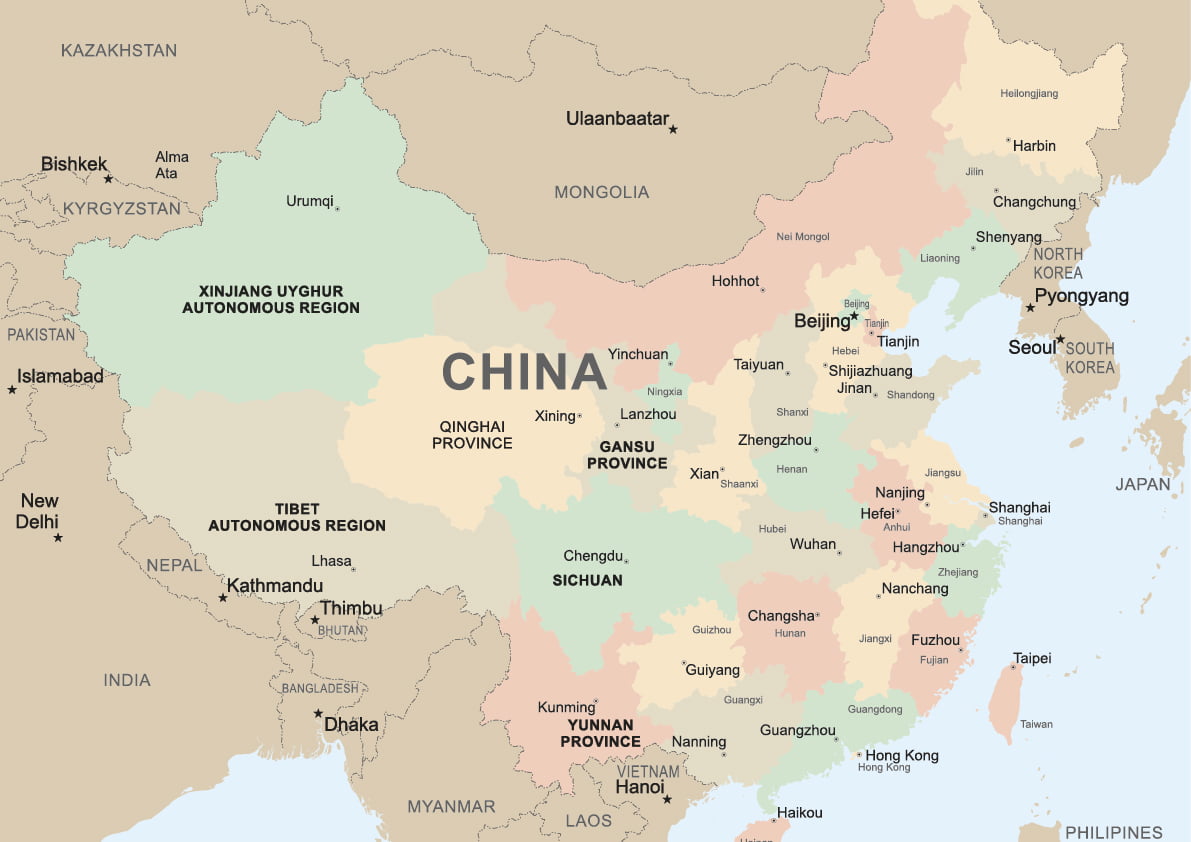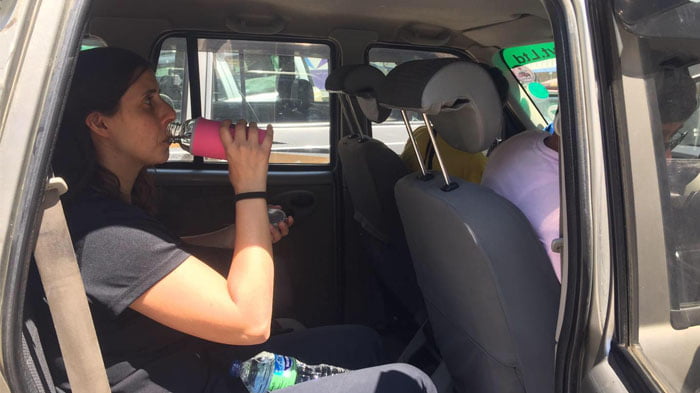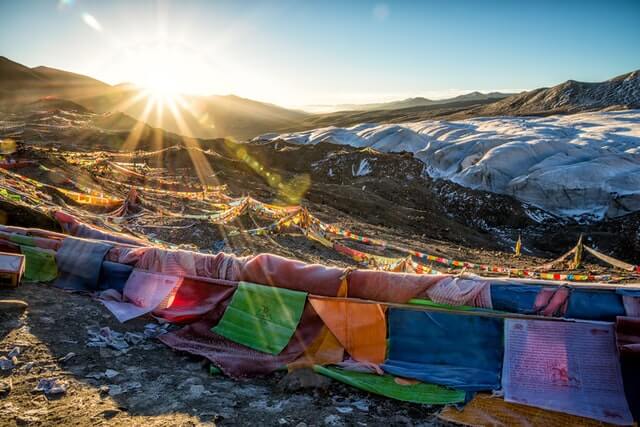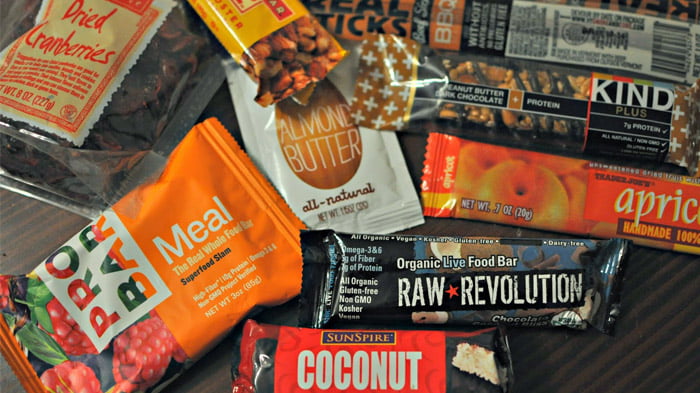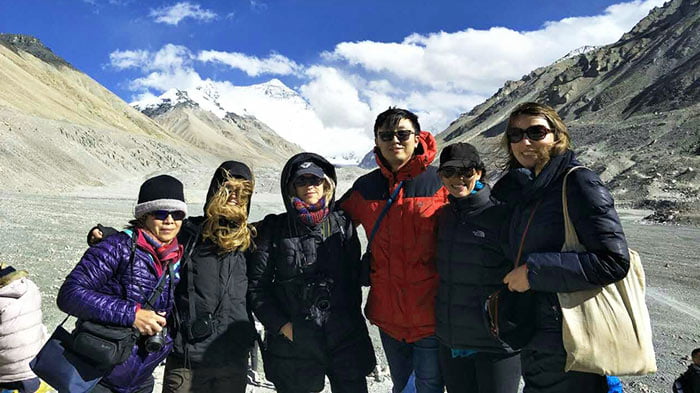Main Features of Tibet’s Climate
- Strong sunshine
- Cold and dry
- Large day/night temperature difference
Tibet’s high altitude results in:
- Thin air
- Less oxygen
- Lower boiling point
The Best Times to Visit Tibet
The Best Time for Sightseeing

From May to October is the best time for sightseeing in Tibet, when the weather is not very cold, averaging above 10°C (50°F). This is naturally the busiest travel time in Tibet, when people come for the warmer weather and higher oxygen content.
July and August are the rainy season in Tibet, though, apart from in the southeast, there is still not a lot of rain.
The Best Times to Visit Mount Everest
If you plan to travel to Mt. Everest, travel in April, May, September, or October, when you are more likely to see the peak clearly. It is more likely to be hidden behind thick clouds the rest of the year.
The Best Time to Enjoy Tibetan Festivals
 Travelers who are interested in Tibetan festivals are recommended to visit Tibet in August when the Shoton Festival, Nagqu Horse Racing Festival, and Ganden Thangka Festival are held. But expect to see huge crowds during the festivals.
Travelers who are interested in Tibetan festivals are recommended to visit Tibet in August when the Shoton Festival, Nagqu Horse Racing Festival, and Ganden Thangka Festival are held. But expect to see huge crowds during the festivals.
The Best Times for a Kailash-Manasarovar Yatra and Kora
A “yatra” is a pilgrimage to a sacred place and a “kora” is a religious walk around a sacred site.
The best time for a Mount Kailash yatra and kora is in summer (June to August). This is due to the warmer temperature and higher oxygen content.
If you are going to do a kora around Lake Manasarovar, autumn (September to November) is the best time as there is warmer weather and less chance of rainfall.
The Best Time to See Autumnal Scenery
Late September to October is the best time to see autumnal colors in Tibet.
Tibet Weather and Tourism in the Four Seasons
Due to the high evaluation, Tibet has quite different seasons from other places with a longer winter.
Spring (April–May)
Temperature: 5-19°C (41-66°F)
Risk of altitude sickness: relatively low
The ice melts and the weather warms during spring, opening blocked remote roads and making travel outside Lhasa more pleasant.
Tibet reopens to tourism in early April (as it is usually closed to visitors in February and March for Tibetan New Year). If you want to avoid large crowds, visiting Tibet in spring is a good option.
Clothing: Prepare a thicker or double-layered jacket, sportswear, sweaters, trousers, and other warm clothes. If you are going to visit Mount Everest and the remote western Tibet, prepare hard-sole outdoor shoes or sneakers.
Things to do: Spring is not the most popular tourist season in Tibet so the tickets for flights, trains, hotels, and attractions are easier to book. This is the time to visit the monasteries in Lhasa and to admire the grassland views and lakeside sceneries.
Summer (June–August)

Temperature: 12-24°C (54-75°F)
Risk of altitude sickness: lowest
The weather in summer is warm in daytime and may be cooler at night. The air has a higher oxygen content than in other seasons. Sometimes it will shower at night or for about an hour in the afternoon in mid-July to late August, so rain is not a big issue even in the rainy season.
Summer is the busiest travel season of the year in Tibet. Transports, accommodations and tickets are difficult to book in summer. A good idea is to book a tour with us at least 1 month before your journey and let us to confirm all bookings for you.
Clothing: Prepare a thinner or single-layered jacket, sportswear, outdoor suits, and casual wear. Prepare waterproof shoes if you are going to visit snowcapped mountains or lakes. As the temperature is much higher, you can take less luggage with you.
Things to do: Summer is the time to travel to the various attractions in the remoter regions and enjoy the high-altitude sites when the mountain passes are snow free. It is also the time to hike.
Activities: Tibetans hold their outdoor market fairs and encampments, festivals, and sports contests when the grasslands are at their lushest. Festivals of note include the Ganden Thangka Festival, the Shoton Festival, and the Nagqu Horse Racing Festival.
Fall (September–October)
Temperature: 7-20°C (45-68°F)
Risk of altitude sickness: relatively low
Fall is also a busy travel season in Tibet and the weather is clear and cool. It’s a good time to hike and trek in Tibet, and it’s also a good time to shoot photos of mountain peaks, due to less cloud.
Clothing: Prepare a thicker or double-layered jacket, sportswear, sweaters, and a down jacket. As the wind grows stronger in the fall, prepare windproof clothes.
Things to do: Autumn is the best time to enjoy the view of snowcapped mountains from a distance. You will have better opportunities to see the peaks of Namcha Barwa or Mount Everest. If you have professional photography equipment, try to shoot the breathtaking starry sky.
Winter (November–March)
Temperature: -5-11°C (23-52°F)
Risk of altitude sickness: relatively high
Tibet is usually closed to foreign travelers in February and March for 5 or 6 weeks. Tibet Entry Permits are normally not issued for February and March. Some roads are closed due to the heavy snow.
In March 2019, Tibet was opened to foreign travelers. We will provide the latest information on this page, paying close attention to the 2020 policy.
Clothing: Prepare a thicker down jacket, sweaters, and other warm and windproof clothing. If your luggage is too large, try to reduce the amount of packed items and buy some when you arrive.
Things to do: Except for the coldness, it’s a good time to travel to lower altitude places like Lhasa, as hotels and travel agencies may offer discounts during winter, and tourists are far fewer than in summer and fall.


